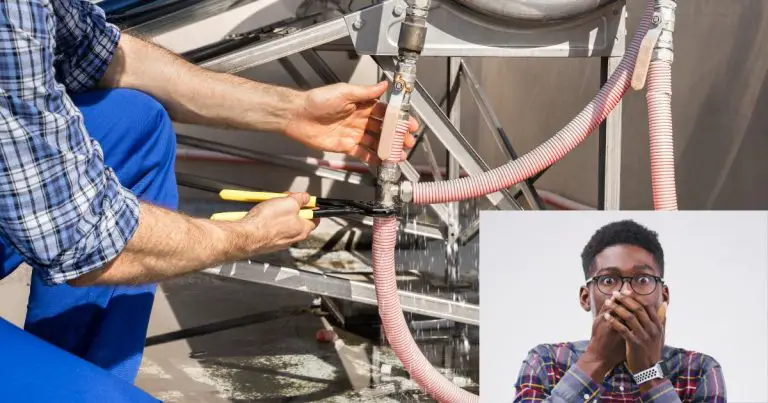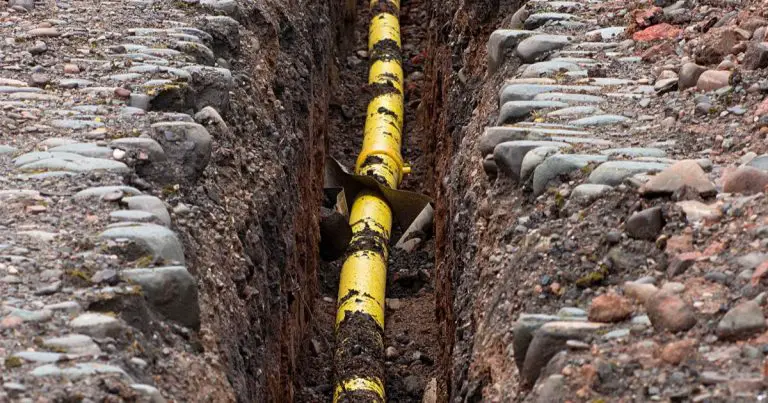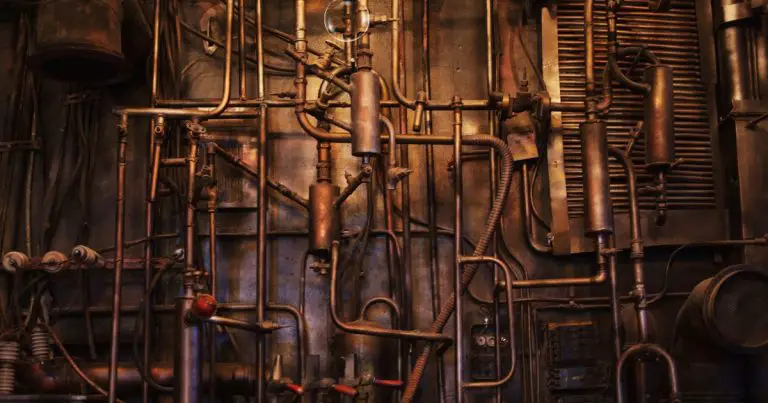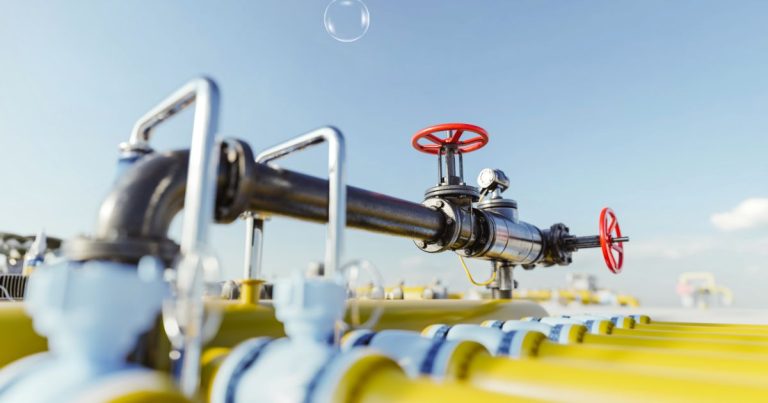Can a Live Wire Ignite Gas? (Everything You Need to Know!)
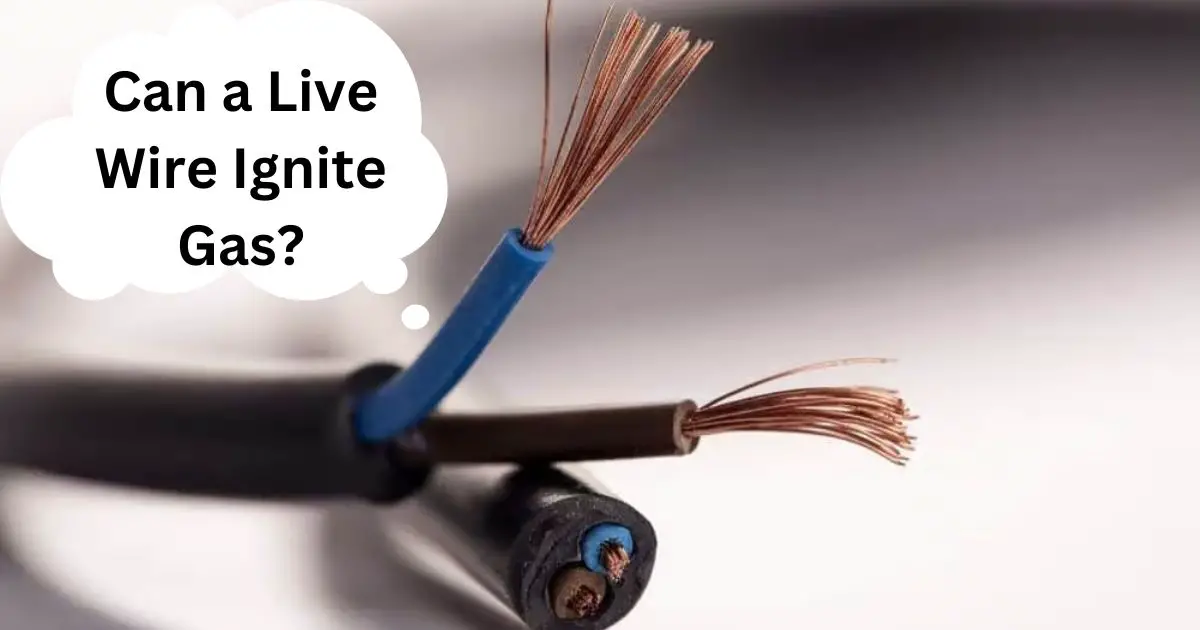

Key Takeaways
- A live wire can indeed ignite gas, especially flammable gasses like natural gas and propane, when the spark created by the electrical current meets specific conditions such as gas concentration and current intensity.
- Exposed cable wires pose a fire risk due to the potential creation of sparks that can ignite combustible materials; ensuring these wires are properly insulated and connections are secure is critical for safety.
- The combination of live wires and gas increases the risk of explosions or fires due to the potential for electrical sparks to ignite flammable gases, underscoring the importance of adhering to safety measures and codes.
- Handling live wires around gas requires strict safety precautions including turning off electrical switches, using protective gear, avoiding open flames, and ensuring proper insulation and ventilation to mitigate risks of ignition.
Live wires can be extremely dangerous, and this danger is even more pronounced when it comes to the potential for a live wire to ignite gas.
The consequences of such an event are severe and the risks should not be taken lightly.
In this article, we will discuss whether or not it is possible for a live wire to ignite gas and how best to handle such a situation if it arises.
Can a Live Wire Ignite Gas?
Absolutely Yes, a live wire can ignite gas. The spark created by the current traveling through the wire is enough to set off an ignition in flammable gases such as natural gas and propane at concentrations of 5-15% when an electrical current of 20-50 milliamperes is applied. If not properly managed, this could lead to dangerous explosions or fires.
Can exposed cable wire start a fire?
The answer is yes, exposed cable wires can start a fire.
This is because exposed wires can create sparks when they come into contact with other objects, and these sparks can ignite combustible materials.
This is especially true if the wires are carrying a high voltage current. The sparks created by the wires can ignite combustible materials such as wood, paper, and other flammable materials.
Additionally, if the wires are not properly insulated, they can create a short circuit, which can cause an electrical fire.
To prevent this from happening, it is important to make sure that all exposed wires are properly insulated and that all electrical connections are secure.
Additionally, it is important to regularly inspect all electrical wiring and connections to ensure that they are in good condition and that there are no exposed wires.
Taking these steps can help to prevent a fire from starting due to exposed wires.
Exploring the Dangers of a Live Wire Igniting Gas:
Live wires and gas can be a dangerous combination.
When exposed to one another, they have the potential to cause an explosion if ignited by a spark or flame.
This is due to the fact that electricity running through live wires creates heat, which in turn can create enough energy to ignite flammable gases such as propane and natural gas.
In addition, electrical sparks from live wires can produce very high temperatures capable of igniting combustible material such as dust particles floating in the air.
The danger of a live wire causing an ignition is most likely when inadequate safety measures are taken – for instance if there are exposed connections between power sources and pipes carrying flammable materials – or when wiring is faulty or outdated. It’s important that homeowners ensure their home’s wiring meets local codes and standards so this type of situation does not occur.
Additionally, it’s best practice for electricians working with potentially hazardous environments – like those containing combustible liquids – to ensure appropriate safeguards are used at all times during installation work on electrical systems; this should include avoiding contact between energized parts (live wires) and any source of combustible material (such as gas).
In short, while it may seem unlikely that something like a live wire could ignite gas, it’s important to remember these dangers exist whenever two substances with explosive capabilities come together without proper precautionary measures taken.
Homeowners should always take extra care when dealing with both electricity and combustible materials in order to avoid creating dangerous situations within their homes or place of business.
How to Safely Handle a Live Wire Around Gas?
When it comes to electricity and gas, safety should be the top priority. Live wires can cause serious injury or even death if not handled properly.
Here are some steps that should be taken when handling a live wire around gas:
Electrical switches:
First, make sure all electrical switches for the area are turned off before proceeding with any work involving a live wire.
This will ensure that no current is flowing through the circuit.
Use rubber gloves:
Second, always use rubber gloves and other protective gear when handling live wires near gas – this will protect against potential electric shocks from contact with energized parts of an appliance or circuit board.
It’s also important to wear eye protection to protect against sparks caused by working with exposed wiring in close proximity to flammable gases such as natural gas or propane.
Damaged cord:
Third, never attempt to repair a damaged cord without proper training – always call an electrician if you suspect there may be a problem with your electrical system because they have the knowledge and tools necessary to safely handle these situations.
Additionally, it’s paramount that any newly installed appliances which require connection into the mains power source must have appropriate insulation fitted beforehand.
Otherwise shock hazards can occur due to direct contact between metal surfaces of adjacent components in the system (such as water pipes).
Open flames:
Finally, avoid using open flames near electrical circuits at all times – this could potentially ignite flammable gasses which could lead serious injury or property damage so extra caution needs to be exercised here too!
Following these precautions will help reduce risk associated with working on live wires around gas – although it goes without saying that taking additional safety measures such as having another person present while doing any kind of work involving electricity is highly recommended too!
Conditions for Ignition:
Ignition of gas is a common occurrence that often leads to catastrophic damage. In order for this to happen, certain conditions must be met.
Energy to ignite the gas:
The first and most important factor is the presence of an ignition source with sufficient heat or energy to ignite the gas.
This can include a spark (electrical current) from live wires, open flames, hot surfaces like engines or exhaust systems, static electricity and others.
Concentration of fuel:
The second condition involves having the right concentration of fuel in air or oxygen.
The correct ratio must be present in order for combustion to occur – typically this means between 4%-15% fuel by volume depending on the type of gas being used.
If there’s too much fuel it won’t ignite; if there’s not enough then it won’t sustain burning either.
Adequate pressure:
Finally, combustion requires adequate pressure and turbulence inside the chamber containing the mixture as well as proper ventilation which allows fresh oxygen into space needed for burning process .
Without these elements in place no reaction will take place even if all other requirements are met.
With all three factors together however , live wires can indeed cause ignition of flammable gases leading to potential fire hazards .

Risk of Electric Sparks and Gas Mixtures:
Electric sparks are a serious risk when it comes to gas mixtures.
An electric spark from an uncovered wire or any other source of electricity can easily ignite combustible gases, such as natural gas.
In enclosed spaces, the sparking wire could potentially cause explosions due to a buildup of combustible gases.
Even in outdoor settings, there is still potential for danger if the right circumstances arise–such as open flames and flammable liquids near energized wires.
The best way to prevent accidental ignition by electric sparks is to make sure all electrical components are properly sealed and insulated with flame retardant material.
This includes both visible and hidden wiring that might be running through walls or ceilings where gas leaks may not be immediately detected.
It’s also important to regularly maintain any type of equipment that produces electrical sparks, like generators or lighting systems, so that they don’t malfunction suddenly and cause a hazardous situation.
Finally, it is important to stay aware of your environments at all times where combustible materials might exist alongside sources of electricity—that means avoiding smoking around exposed wires or leaving open flames unattended near them as well!
Taking the initiative proactively can help ensure safety from accidental ignitions caused by electric sparks in gas-filled areas.
How does electricity ignite gas?
Electricity is an effective and efficient way to ignite gas.
When a live wire carrying electricity comes into contact with a combustible material, it produces sparks which then react with the gas molecules in the air, causing them to ignite.
This process can be used safely when done correctly.
The amount of energy needed for successful ignition depends on the type of gas being ignited; most commonly natural gases such as methane or propane.
A low voltage electrical spark may be enough to generate heat and pressure necessary for ignition, while more volatile materials like gasoline require much higher current levels due to their lower flash points.
In addition, certain types of igniters may produce their own special “hot spark” that will cause even higher temperatures and pressures within the chamber leading up to combustion.
When using electricity for ignition purposes, safety measures must always be taken in order ensure safe operation of any equipment involving combustibles.
For example, all electric circuits should have ground-fault circuit interrupters (GFCIs) installed in order to protect against shocks if wiring becomes exposed or shorted out during operation.
Additionally, any room containing flammable gases must also have proper ventilation systems installed so that dangerous fumes do not build up and create hazardous conditions inside the space where electrical sparks might occur or where hot surfaces exist that could potentially cause fires outside of those caused by electrical sources alone.
What are the 4 sources of ignition?
When trying to determine if a live wire can ignite gas, it is important to understand the four sources of ignition.
These are open flames and sparks, hot surfaces, static electricity and electrical arcing.
Open flame:
Open flame or spark-based ignitions require an external source of energy in order to start the combustion process.
This could be something as simple as a match being lit next to the gas or fuel vapor mixture.
The resulting heat causes the molecules in the mix to speed up and become excited enough for spontaneous combustion occur when they react with oxygen molecules.
Hot surface:
Hot surface-based ignitions involve materials that store thermal energy from either direct contact with fire or from other heated objects around them such as exhaust pipes on vehicles.
When these materials come into contact with a combustible fuel vapor mixture, their stored energy is transferred quickly enough for combustion to take place at the point of contact between them and any flammable vapors present nearby.
Static electricity:
Static electricity arises due to two different surfaces having different charges attracting each other through electrostatic forces until their potential energies aligns causing an electric current strong enough for electrons within them jump across this gap generating friction which produces sparks capable of starting fires under suitable conditions.
Electrical arcs:
Electrical arcs form when there are gaps between power lines and switches not fully insulated allowing high voltage current’s arc path jump across this gap producing large amounts of heat sufficient enough cause ignition even without any combustible material nearby.
Conclusion:
In conclusion, it is possible for a live wire to ignite gas.
When a live electrical current comes into contact with combustible gases or vapors, an electric arc can be created that could cause the material to ignite.
This is especially true in areas where there are high levels of both electricity and combustible materials like gasoline and natural gas.
It should also be noted that many industrial processes involve the use of electricity near flammable materials, so safety measures must be taken to ensure these arcs do not occur which may include proper insulation or grounding of wires.
When dealing with situations where there might be a potential spark from an exposed wire coming into contact with combustible gases or vapors, caution should always be exercised to prevent any accidents from occurring.
FAQ’s
Q1. What types of gas are most likely to be ignited by a live wire?
Flammable gases like natural gas (methane) and propane are most susceptible to ignition by a live wire. These gases can ignite when mixed with air in certain concentrations and exposed to an ignition source like an electric spark or heat from a live wire.
Q2. How can I prevent a live wire from igniting gas in my home?
Preventing gas ignition involves ensuring gas lines and electrical wiring are properly installed, maintained, and inspected regularly. Keep flammable materials away from electrical sources, use gas detectors, and ensure your home’s electrical system is up to current safety standards.
Q3. What should I do if I suspect a live wire is near a gas leak?
Immediately evacuate the area without turning on or off any electrical switches, appliances, or lights, as this could trigger an explosion. Call emergency services and the gas company from a safe distance to report the gas leak and the presence of a live wire.
Q4. Are certain conditions more prone to gas ignition by live wires?
Yes, enclosed spaces with poor ventilation increase the risk because gas concentrations can reach explosive levels more quickly. Also, environments with a mixture of flammable gases and oxygen, or where electrical wiring is old, damaged, or improperly installed, are more prone to ignition events.

